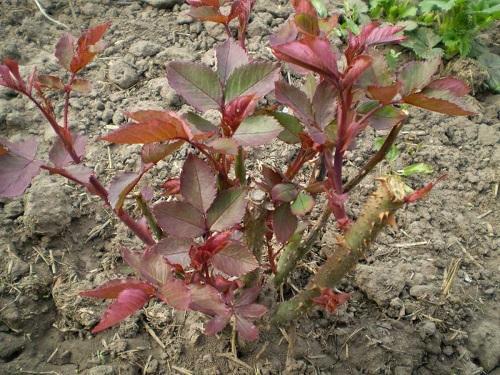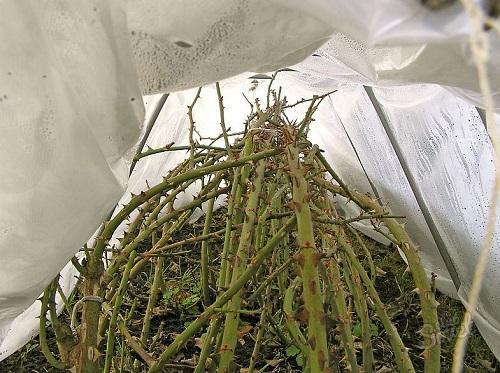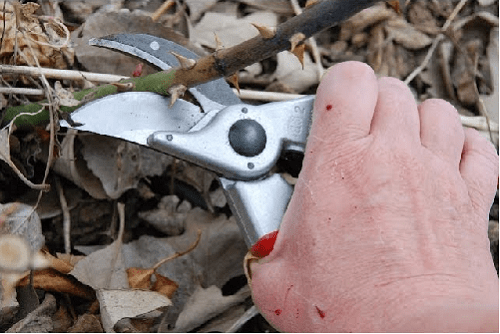Spring care for roses in the country
With the arrival of spring, rose lovers have more trouble, because they need to competently prepare the shrubs for the next season.

Spring care for roses in the country includes:
- timely removal of the winter shelter;
- pruning and shaping a bush;
- fertilization;
- soil mulching;
- prevention and protection from pests and diseases.
Removing the winter shelter from the bush

Basically, the old planting of roses for the winter is spud with earth, and in the spring it is simply gently raked from the base of the bush. Young roses planted in autumn need more frost protection. With the first warming, the buds under the shelter come to life, so it is important to open the bush in time in the spring.
In the northern regions, where the arrival of spring is a little late, you should not rush to open roses, on the contrary - in March it is recommended to throw small piles of snow over it. The bush is fully disclosed in April.
Premature removal of the covering material can lead to freezing of the rose.
To prevent the water from stagnating around the bush after the snow has melted, grooves must be made to drain it. The covering material is not removed immediately - the rose must be periodically ventilated and tempered, raising the shelter for a while. It will be possible to finally release roses after the soil warms up 25 cm in depth. Shelter should be removed in the evening.
Spring pruning of roses

Spring pruning of roses carried out with the aim of rejuvenating the bush and its formation. In this regard, pruning is divided into:
- Sanitary pruning - provides for the removal of diseased and frozen branches. Thin shoots growing inside the bush are also subject to cutting. The latter should be removed to provide ventilation of the crown.
- Main pruning - healthy strong shoots should be shortened above the upper living bud.

The cut should be flat and with a white core. Each slice is treated with garden pitch.

Fertilization

Roses need two feeding during the season. The first should be done immediately after cutting. For long and abundant flowering, potash, phosphorus, magnesium and nitrogen fertilizers are applied under the bush on the loosened and abundantly moistened soil. Chicken droppings are widely used by flower growers as spring feeding. The second feeding is carried out in the summer before the second flowering.
Soil mulching

In the spring, the soil around the bush must be mulched with sawdust to create additional protection for the root system. Mulch will allow heat and moisture to last longer. Compost, bird droppings or hay can also be used well for this purpose.
The land around the bush needs to be loosened, watered, fertilized and mulch applied in an even layer (5-6 cm), without covering the ground part.
Prevention and protection against pests and diseases
3-4 days after pruning, roses need to be treated with special complex preparations to protect against diseases. Insect pests will help to destroy such products as Antio and Karbofos.
For the prevention of diseases, experienced flower growers recommend treating roses in spring with a solution of kerosene (1 tsp per bucket of water) or a 3% solution of copper sulfate.
Spraying should be done in calm weather twice with a 2-week break.
Correct and timely spring care of roses will ensure their healthy development and abundant flowering until autumn.
Thanks for the helpful and interesting article!
Healthy and well-groomed rose bushes can turn even the smallest piece of land into paradise. Roses are a rather demanding plant, so lazy people should not take up their cultivation.